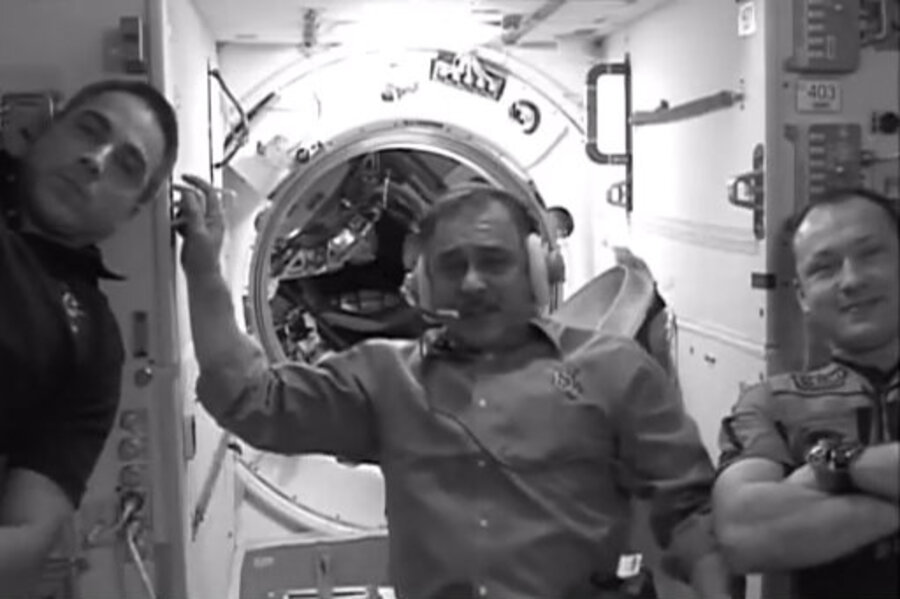After nearly six months in space space station, astronauts return to Earth
Loading...
Three crew members of Expedition 36 to the International Space Station touched down in Kazakhstan on Wednesday, after spending 166 days in space.
In a video from NASA, American astronaut Chris Cassidy and Russian astronauts Pavel Vinogradov and Alexander Misurkin exchange farewell hugs with the Expedition 37 crew as the group prepares to de-board the station (in space, hugs look like a slow-motion take of two would-be lion kings lunging into combat).
The departing team then nips into the Soyuz TMA-08M spacecraft, the hatch is screwed closed, and the craft undocks from the Poisk module on the International Space Station at 6:36 P.M CST.
Once undocked, the craft is seen drifting slowly away from the ISS before performing a de-orbit burn as it heads for Earth. In the final phase of the trip home, the capsule makes a parachuted landing, on its side, on Kazakhstan’s steppes at 10:58 CST.
The entire trip took just over four hours, about an hour less than a commercial flight between California and New York.
After spending almost half a year in space, the astronauts are not yet prepared for Earth’s gravity. Instead, the group is helped into reclining chairs and hoisted into an inflatable medical tent, where researchers will conduct biomedical tests on their adaptation back to gravity, in addition to the standard medical examination. Mr. Vinogradov, who at 60-years-old is the oldest person ever to land in a Soyuz vehicle, is exempt from some of the experiments.
ISS Expeditions are composed of two teams of three astronauts. The team that landed Wednesday arrived on the ISS on March 28 to join Expedition 35, which had kicked off about two weeks earlier with the arrival of three other astronauts. Expedition 36 began on May 14, when Expedition 35’s original team of three left the station.
Now, the undocking of the Soyuz capsule marks the beginning of Expedition 37. Russian astronaut Fyodor Yurchikhin, NASA astronaut Karen Nyberg, and Italian astronaut Luca Parmitano, who all joined Expedition 36 at the end of the May, will head off the expedition, with another group of three slated to arrive and join the expedition later this month.
Last month, Maj. Parmitano survived a disastrous spacewalk in which about one and a half liters of water from his spacesuit’s cooling system leaked into his helmet. His spacewalk teammate, Cmdr. Cassidy, had to help him back into the station, after realizing that water had accumulated in Parmitano’s helmet such that Parmitano could not hear, speak, or see. NASA officials said that Parmitano was in good condition after the incident and had resumed normal activities on the station.








